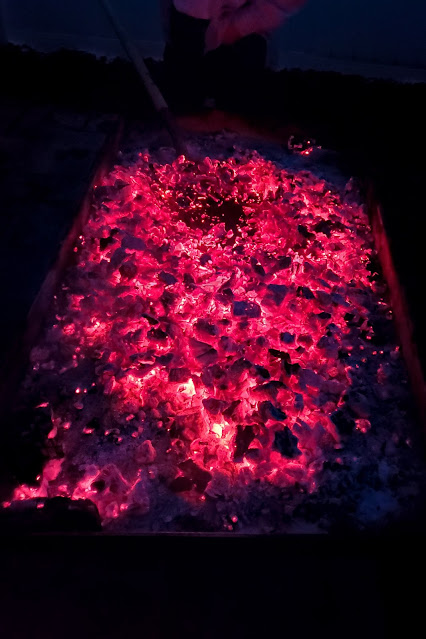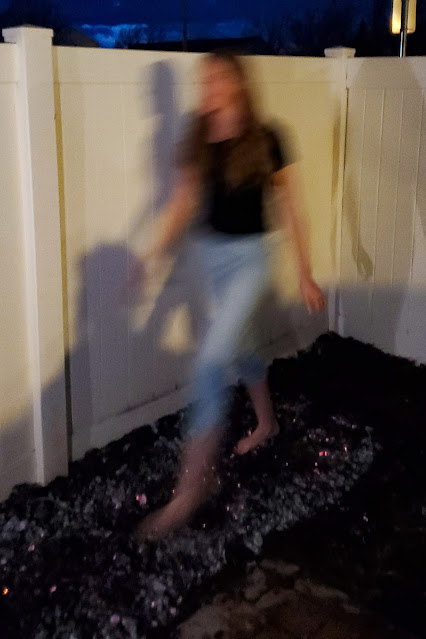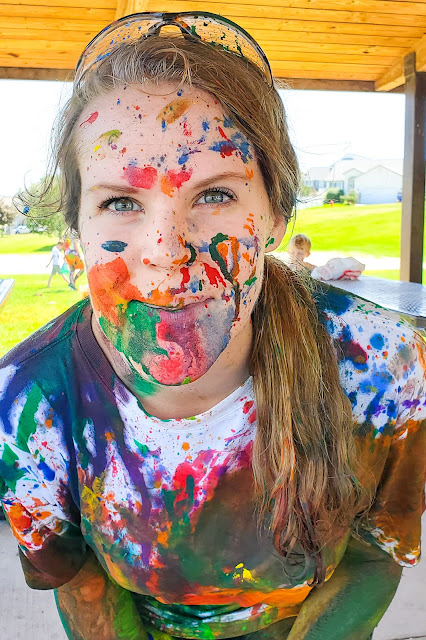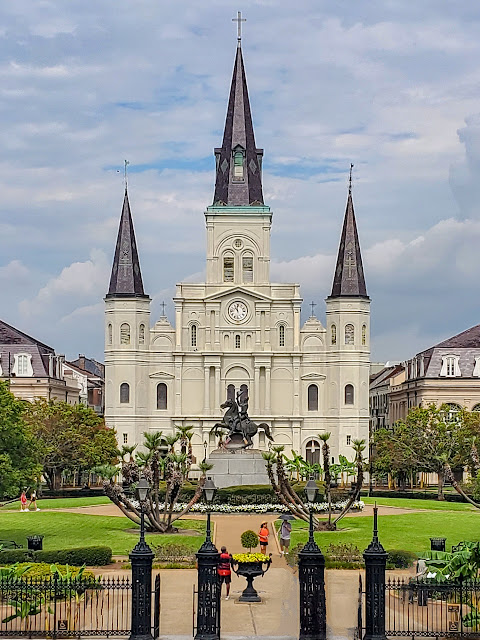The Science Of Firewalking And Why You Should Try It
I walked on hot coals!
It's something that I have wanted to do since I was fifteen years old, and it feels so exciting to have finally done it.
Read on to learn about my experience with firewalking, a little history, and bit of information on the science that enables a person to walk on burning coals without injury.
Hopefully, this article will inspire you to step outside of your own comfort zone and try something new!
DISCLAIMER: This article is not intended to be instructional. Do not ever attempt to firewalk at home or without a trained professional.
FIREWALKING IN HISTORY
The practice of firewalking dates back to at least 2000 BC when Indo-European tribes near the Black Sea used the firewalk as a rite of passage for warriors. Military leaders became discouraged when young warriors succumbed to their extreme fear on the battlefield despite rigorous training. So, these tribesmen initiated the practice of firewalking to help warriors get in the right mindset for battle.
There are also accounts of firewalking in India that date back to 1200 BC. However, it has also been practiced throughout the ancient world including Africa, North America, Polynesia, Fiji, and Greece, to name a few.
It is possible that cultures all over independently discovered that a person can walk on burning coals under the right conditions.
Historically, a stroll across hot coals has been viewed as an act of faith, a show of bravery and self-mastery, or a right of passage. Although it is not widely practiced today, it is still seen as a form of self-empowerment.
Obviously, there is nothing magical about walking on fire. The act itself will not change your life, nor will it completely shift your mindset, but it can be seen as a sort of highlight on a person's journey in overcoming fear, self-doubt, or trauma.
THE SCIENCE BEHIND FIREWALKING
I wanted to walk on hot coals mainly because it sounded thrilling to me. Sometimes I just want to know if I have the guts to do something so intimidating, but most of all I relish the adrenaline.
It is truly amazing to tread on embers burning at 1000° F and not get burned. It might sound crazy, but the science behind it is actually quite simple.
Part of it has to do with the water content in our bodies. If you have ever tossed a paper cup in a campfire, you know that it will take just a few seconds for the paper to burst into flames.
And if you were to place a paper cup full of water into the fire you might expect the paper to burn and spill the water out. But anyone who has tried this experiment knows that the water keeps the paper cup from burning, at least until the water starts to boil away.
This same concept applies to the water in the flesh of our feet. If you were to press a sheet of paper onto burning red embers it would surely burn, but briefly apply the same pressure with your foot, and you will be just fine.
The type of firewood also plays a role since some varieties burn slightly hotter than others. Hardwoods such as cherry and apple are preferred over pine because they do not burn as hot. The type of wood determines the quality of the coals as well. Our firewalk instructor likes to use white birch because it makes good coals that don't crumble (like pine does) and they glow with a vibrant red.
It is important to note that there is a crucial distinction between wood coals and charcoal briquettes. I actually had a couple friends ask me if I walked on briquettes. No!
Under the right conditions, coals are safe to walk on because even though they can have a high temperature wood coals are poor heat conductors. You can open an oven and come in contact with 350° F air and not burn, but if you touch a metal cake pan with that same temperature it will instantly scorch your skin. This is because air is a poor heat conductor compared to the metal pan.
350° F air can burn you but it takes longer. Because a firewalker's feet only has brief contact with the hot coals there is not enough time to burn the skin. The pace at which one walks is important too. A slow walk will result in injury, but running will cause feet to sink deeper into the embers and increase the chance of getting burned.
HOW TO WALK WITHOUT INJURY
Firewalk injuries are rare, though. In 2016, 40 people were burned at a firewalk event in Dallas, but approximately 7,000 people participated that evening. Only 0.6% of all the people who walked that night were injured!
There are a few reasons why burns occur at all and the most common is negligence. Gordon Cooper, who hosted our firewalk and who has walked approximately 5,000 times himself, explained that the only times he has seen injuries at his events was when someone was drunk. He said these few people goofed around as they trudged slowly back and forth across the coals and sometimes stood in one place for too long.
Another risk of injury arises if the wind suddenly picks up. It is safest to spread out a bed of coals in a space that is protected from the wind. Gusts blowing over coals causes them to burn hotter and brighter making it unsafe to walk. Gordon said unexpected winds have brought a handful of his events to a sudden end, and he himself would never attempt to walk under these conditions.
Gordon Cooper warned that people sometimes get tiny blisters, but these usually cause no pain. He said when a person does blister it is almost always on the instep of the foot. This happens because of the pocket of air between the coals and the arch of the foot, especially if the firewalker has high arches.
When I got home after firewalking I checked the soles of my feet out of curiosity and sure enough, there was one miniscule blister on the instep of one foot, but I couldn't even feel it.
At the Dallas firewalk event where 40 people were injured, there were reports of people pausing on the coals to take a selfie or have their picture taken by a friend. This is probably more likely to happen at a large event where instructors cannot closely supervise every participant.
In a nutshell, if you want to firewalk, don't walk drunk, don't walk when it's windy, and don't stop, even for a picture.
OUR EXPERIENCE
When Josiah and I went firewalking, we joined a small group of only seven people, including Gordon, our instructor.
On a large metal plate, the size of a table, Gordon burned the wood down to glowing embers. He then shoveled the coals onto a soft, bare flowerbed.
Before we started, a bin of water was placed at the end of the flowerbed, just a couple feet beyond the coals.
Gordon explained that sometimes little coals will stick to the feet and burn if they are left there too long. So, at the end of our walk, we needed to step into the bin to wash off any wayward coals.
He took the first turn, then invited us all to try it for ourselves. We were instructed to walk briskly, not too fast and not too slow. They key was to march with confidence and to not look down.
That first walk was kind of intense to be honest. It wasn't at all scary like bungee jumping, but I was glad to have Gordon there guiding me along and keeping me at a good pace.
The coals were not so hot that I instinctively jumped off them, but for a second there I really did want to run to get it over with. Josiah described the feeling as "cozy," which made me laugh. Honestly, it did feel good but I also thought maybe my feet really were burning and I would feel it later.
After that initial walk, Josiah and I went again and again. We each strolled across those coals three times. It was just so much fun and it felt good! I felt endorphins from the heat, the mild sense of danger, and the moral support from our small group.
I noticed a huge difference in temperature on my third walk and asked if it was because my feet were wet. They were dry the first time and it had felt much hotter. Gordon said it was simply because we were smothering the embers every time we trod on them.
He said having wet feet makes no difference when it comes to feeling the heat, but I do know that putting out a candle with wet fingers feels much better than trying it with dry fingertips.
All I can say is, it's definitely not necessary to have damp soles when firewalking. I only got a tiny, painless blister, and even though it was very hot that first time, I didn't burn!
FINAL THOUGHTS
It was exhilarating to literally step outside my comfort zone and find that not only was I okay, but it was altogether awesome! It makes me wonder about many other things I have always wanted to do but I have been too afraid to try. Maybe those scary steps I want to take in life will turn out just as painless and amazing as firewalking!
I find that the most worthwhile endeavors in life are often the most intimidating. Maybe firewalking could help you overcome your fears, maybe you are just curious to know what it really feels like. Either way you are sure to have a great time.
Would you ever try firewalking? Share a comment and let me know!
Gordon Cooper offers an empowerment course, which includes a firewalk, on the last Saturday of every month. He is located in South Jordan, UT and you can learn more about his program here.
You can also check out Quantum Step Firewalking (also located in Utah) here.














Comments
Post a Comment